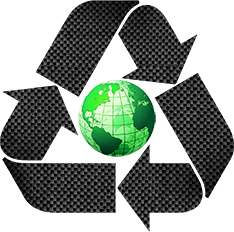Carbon Fiber Recycling
By Elizabeth Rosenberg

Senator Cantwell's Carbon Fiber Recycling Act of 2015: A Step Toward a Greener Future
Senator Maria Cantwell from Washington has taken a bold step toward sustainability with the introduction of the Carbon Fiber Recycling Act of 2015. This groundbreaking legislation highlights the growing need for innovative solutions to manage carbon fiber waste, a byproduct of a rapidly expanding industry. The bill mandates the U.S. Department of Energy (DOE) to conduct a comprehensive study on the technology, life cycle, and economic implications of recycling carbon fiber. It also encourages collaboration between the DOE, major industries like automotive and aviation, and the Composite Recycling Technology Center (CRTC) in Port Angeles.
The rise of carbon fiber use across sectors such as aerospace, energy, and transportation has brought both opportunities and challenges. While it offers lightweight, durable materials that enhance performance, its end-of-life management remains a pressing issue. Every year, millions of pounds of carbon fiber composites end up in landfills, contributing to environmental concerns. The CRTC is at the forefront of addressing this problem, working to transform what was once considered waste into valuable resources for new applications—ranging from electric vehicles to renewable energy systems and construction materials.
Recycling carbon fiber isn't just about reducing waste; it's a crucial strategy for lowering carbon emissions. As companies become more conscious of their environmental impact, initiatives like these are gaining momentum. HJ3 Composite Technologies is one such company actively involved in carbon fiber recycling. They ensure that all leftover scraps from their projects are returned to their facility, where they are inspected and repurposed for future use. Their commitment to sustainability aligns with broader industry goals, and they're now seeking partnerships to further expand their recycling efforts.
This act represents a significant shift in how we think about material reuse and environmental responsibility. With support from government agencies, industry leaders, and research centers, the path forward for carbon fiber recycling looks promising. As the demand for sustainable practices continues to grow, the success of this initiative could serve as a model for other regions and industries looking to reduce their environmental footprint.
Key Takeaways:
- Senator Cantwell’s Carbon Fiber Recycling Act of 2015 aims to promote sustainable practices in the carbon fiber industry.
- The U.S. Department of Energy will lead a detailed study on the technology, life cycle, and economic impact of recycled carbon fiber.
- Collaboration among the DOE, automotive, aviation, and recycling centers is key to developing a demonstration project.
- The rapid growth of the carbon fiber market has led to increasing amounts of waste being sent to landfills annually.
- Recycling carbon fiber helps reduce both waste and greenhouse gas emissions, supporting global sustainability goals.
- HJ3 Composite Technologies is actively involved in recycling and is seeking industry partners to scale up their efforts.
Suzhou Gold ant Precision Sheet Metal Co.,Ltd , https://www.jmysheetmetal.com